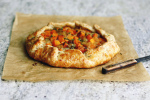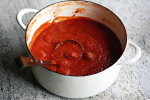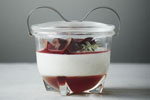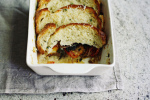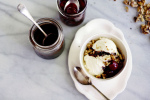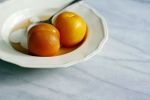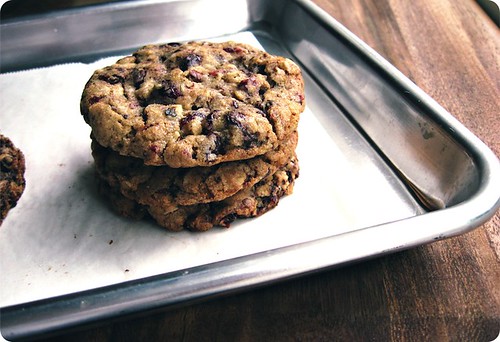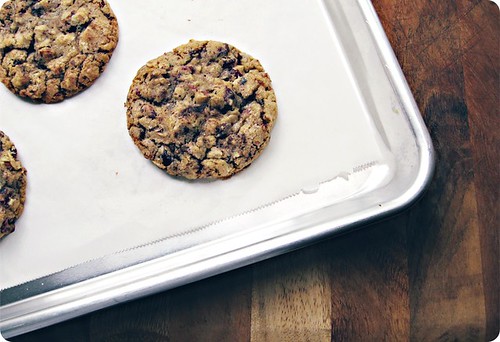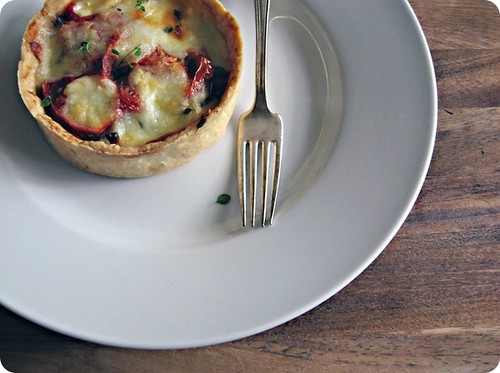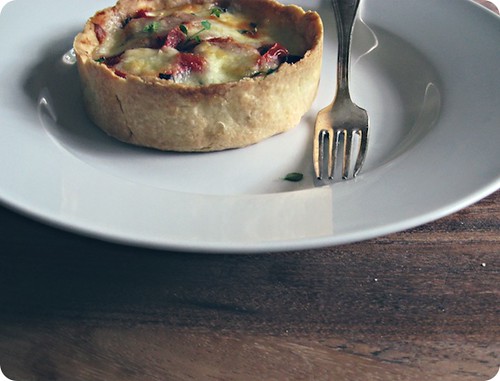Munched, gleefully
 Thursday, September 17, 2009 at 7:08PM
Thursday, September 17, 2009 at 7:08PM 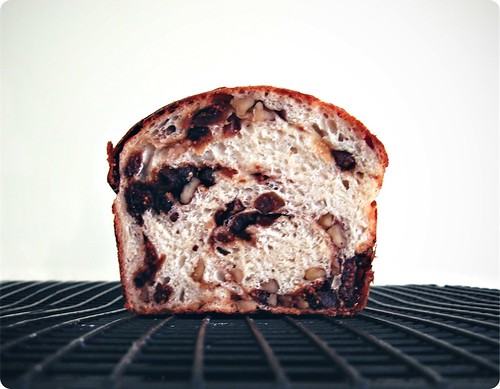
I failed. F-a-i-l-e-d. It was epic.
It was gnocchi.
Had you walked into my kitchen in the late-afternoon hours of Wednesday, September 16, 2009, you would have found me covered from hand-to-elbow with dough and in near exasperated tears, with every viable work surface buried under the detritus of my humiliation, my father at my side in a valiant effort to salvage the day, my husband on the phone patiently talking me down from my fit of pique and, in calm, even tones, assuring me that takeout would be more than fine for dinner.
I tell you, I can make gnocchi. Honestly. While not regularly enough to say often, I've made it enough times to consider myself passably adept. But this, this was a new, devil of a recipe. A recipe that wanted to take me down.
And boy, did it ever.
It went straight for the knees, pinned me to the mat and had me calling for Daddy. I won't go into too many details or point any flour-encrusted fingers, since I'm not entirely sure that the fault is that of the recipe or my own. Or a combination of the two. The blame may lie with the potatoes. Who knows.
I will tell you that the dough refused to come together in any semblance of a workable substance. I had a languid blob lounging smugly on my kitchen counter. No matter how much flour I fed it it would not be sated; it was still boundless, still a slowly-oozing, formless mass.
That's when I called in reinforcements.
We rallied, we prevailed. Somewhat. My father and I managed a handful of successful dumplings, those few sent into the boiling water, then tossed with softened butter and a handfuls of Parmesan. Optimistically, we each tried one.
It was a joyless mouthful. They tasted of defeat. Defeat and cheese.
So abject was I, I was tempted board up the kitchen and declare it all a lost cause. If it weren't for the Fig and Walnut Bread we had made earlier in the day, I might have scrapped any tattered remnants of faith I had in my culinary ability.
The bread was a riff on Julia Child's white bread that we make quite often, a fruit-filled version based on a combination of flavours I have done before. Enriched with milk and fragrant with honey, the sturdy crumb is the ideal sort to be wrapped around a swirl of dried figs, walnuts and the subtle, savoury presence of thyme. It is a bread to be cut into thick slices, toasted enough that you hear the fruit sizzle ever so slightly, slathered with sweet butter in lavish proportion and then munched, gleefully.
And we did exactly that, while we waited for the delivery man.
Fig and Walnut Bread with Thyme
Adapted from Julia Child's Homemade White Bread.
More than just saving my pride, the bread saved today - if it wasn't for the bread, I'd be here empty handed. And I hate to do that. So while this may have not been my intended offering, please accept it, with the admission that since this was an unplanned debut, I did not take notes as conscientiously as my usual. But we are all good enough friends that I hope that my best guess will suffice for now.
The loaf in question is already a thing of the past, and there has been another petitioned for the weekend; I will retry the recipe then, to double-check my recollection.
Saturday, September 19, 2009: I tested the recipe again last night, and made two changes - both pertaining to butter. I added the 2 tablespoons of butter to the milk/water mixture to reduce the number of steps, with no ill effects to the final bread. Surprisingly, I also decided it is better to forgo the smear of butter in the swirl since the fat causes the layers to separate, leading to loss of filling when the bread is sliced. Without the butter the dough gripped the figs and walnuts more firmly.
Ingredients
3/4 cup chopped walnuts
1/4-1/2 teaspoon fresh thyme leaves, chopped
fine grain sea salt, optional
1 cup water
1 1/4 cup milk
1/4 cup honey
2 tablespoons unsalted butter
1 teaspoon active dry yeast
6 cups all-purpose flour (or thereabouts)
2 teaspoons kosher salt
1/2 cup muscovado sugar or dark brown sugar
1 cup chopped dried figs
2 tablespoons unsalted butter, melted and cooled
In a medium skillet over medium heat, toast the walnuts for about 5 minutes, stirring often. Once the nuts are lightly-golden and fragrant remove immediately from the heat and into a bowl. Toss through with a sprinkling of fine sea salt, if using, and the chopped thyme. Set aside to cool.
In a small saucepan over medium-low heat, gently warm the water and milk. Add the honey, stirring to dissolve. Stir in the butter, heating gently until melted. The mixture should be warm, around 105-110°F. Pour liquids into the bowl of a stand mixer or a large bowl. Stir in the yeast and allow to stand for five minutes.
To the yeast, add 3 cups of the flour and the salt. With the dough hook attachment or by hand, mix to combine (if using a mixer, proceed on medium speed). Continuing to stir, add the remaining flour a little at a time, until the dough begins to pull away cleanly from the sides of the bowl; it should still be slightly sticky.
Turn the dough out onto a lightly-floured work surface and knead until smooth and elastic. The amount of time will depend on if you used a mixer or worked by hand, anywhere from 2-10 minutes. Place the dough in a large, lightly-greased bowl, turning the dough over to coat. Turn the dough right side up and cover loosely with plastic wrap or a tea towel. Set bowl in a warm, draft-free spot to rise until doubled in bulk, around 2 hours.
Butter two 8-by-4-inch loaf pans and set aside. Punch the dough down gently, then divide into two equal portions on a lightly-floured work surface. Taking one ball, roll out to a rectangle around 9-by-12-inches. Sprinkle half the sugar over the dough, leaving a thin border at all sides. Repeat with half of the figs and half of the toasted walnuts.
Start rolling the dough from the short end, forming a tight cylinder, pinching the seam together to seal. Bring just the edge of the ends of the roll up to enclose the sides and pinch to seal. Place the dough into one of the prepared pans. Repeat process with the second ball of dough.
Cover loaves loosely with plastic wrap or with tea towels, and allow to rise in a warm spot until doubled again in bulk, around 45-60 minutes. Preheat an oven to 375°F (190°C).
Brush the loaves with the remaining melted butter, and bake in the preheated oven for 35-40 minutes. The bread is done when it is golden brown and sounds hollow when tapped from the bottom. Turn loaves out immediately onto a rack, turning them right side up to cool.
Makes 2 loaves.
Notes:
• It is best to use a mild honey here, nothing with so much presence that it overshadows the mellow sweetness of the figs.
• Raisins, dates or dried cranberries would all be good substitutes for the figs, and resh rosemary for the thyme.
• For a straightforwardly-sweet filling replace the thyme with a generous sprinkling of cinnamon. Feel free to be generous with the muscovado as well.
• I scatter the figs and walnuts somewhat erratically; I think the uneven distribution results in a more interesting loaf. If you want a perfect coil of filling, be more precise.
• Zoë has a helpful photographic step-by-step of how to roll such breads on her (lovely, inspiring) site. Any of the doughs she mentions would be a fine match for this filling.


